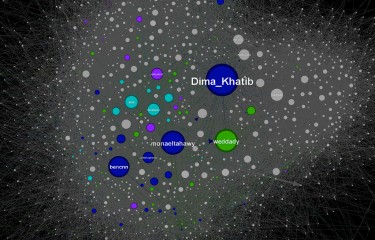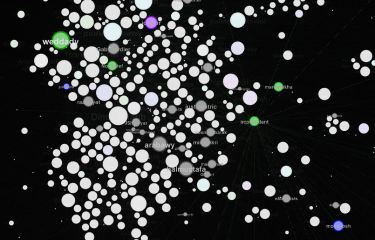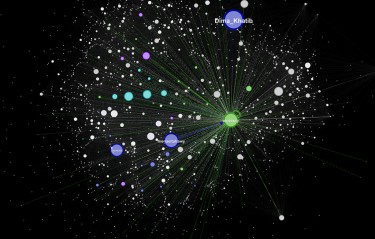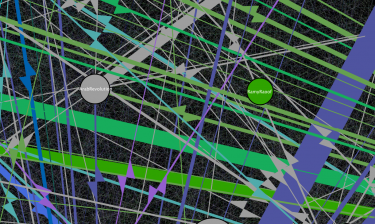This post is part of our special coverage Egypt Revolution 2011 and Tunisia Revolution 2011.
This past year has been eventful to say the least in our merry little Middle East and North Africa region. As a part of our end-of-year coverage we look back at some of the major events we covered during 2011. The following post highlights the role of the Global Voices Online community in spreading information on Twitter during the Tunisian and Egyptian revolutions.
The data that feeds this visualization is taken from “The Revolutions were Tweeted“, an International Journal of Communication article mapping out prominent information flows during the Egyptian and Tunisian revolutions. The study uses two datasets of tweets. The first includes 168,663 tweets posted between January 12 and 19, 2011, containing the keyword ‘#sidibouzid’ or ‘tunisia’. The second includes 230,270 tweets posted between January 24 and 29, 2011, containing the keyword ‘egypt’ or ‘#jan25′.
As a part of the study, the authors classified users into actor types, with the goal of tracing the prominent paths in which information spread, along with inherent preferences between user types. Unsurprisingly, the authors found homopholy playing a dominant role in retweet behavior (journalists tend to retweet other journalists, bloggers retweet bloggers, etc…).
If we zoom into the the network, we can see the intricate relationships and connections between users tweeting and retweeting content. For example, the image below is a screenshot taken when the graph focus is on @ircpresident (our very own Mohamed ElGohary). The other nodes that light up and display names represent ElGohary's immediate “neighborhood” – folks that either he retweeted or who had retweeted him.
The larger a node is, the more times it was retweeted. The thicker an edge, the more retweets that connection generated. The green nodes are Global Voices contributors. Light blue are journalists employed by Mainstream Media organizations, dark blue are bloggers and purple colored nodes are activists.
Nasser Weddady (@weddady) is central to this graph in terms of both number of times he was retweeted, but also the wide array of users who reposted his content (over 800 times within this dataset, which represents a tiny fraction of the actual content posted during the events).
The graph has 71,525 nodes representing the different Twitter users posting content about Egypt and Tunisia, with 190,814 edges – configurations of who retweeted whose content. Amongst the users, there are 140 Global Voices contributors, posting and retweeting content relevant to the events in both Egypt and Tunisia.
When we take all of the Global Voices author nodes and places them outside the main cluster, how they interconnect with the rest of the network becomes much clearer.
It has been an intense and inspiring year. Global Voices has been doing a phenomenal job tracking and covering perspectives highlighted in blogs and within social media across the globe and it is an absolute honor to be part of the team.
For our full coverage on the Tunisian Revolution, check out our Special Coverage page and for a snapshot of the ongoing revolution in Egypt, tune into our Egypt Revolution Special Coverage page.
This post is part of our special coverage Egypt Revolution 2011 and Tunisia Revolution 2011.












6 comments